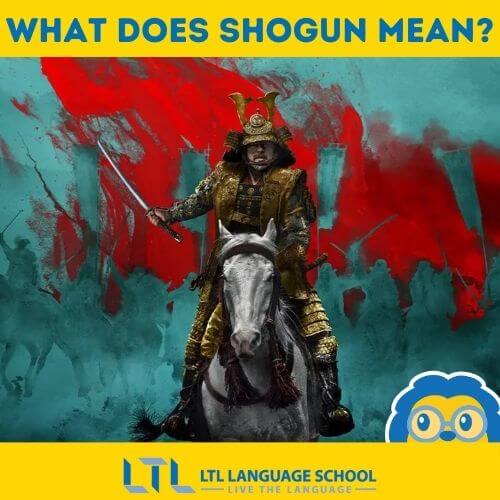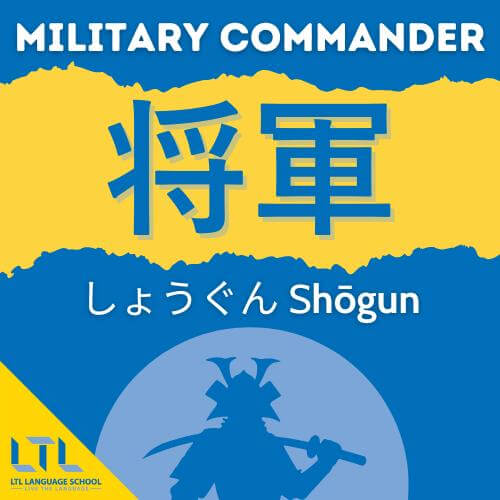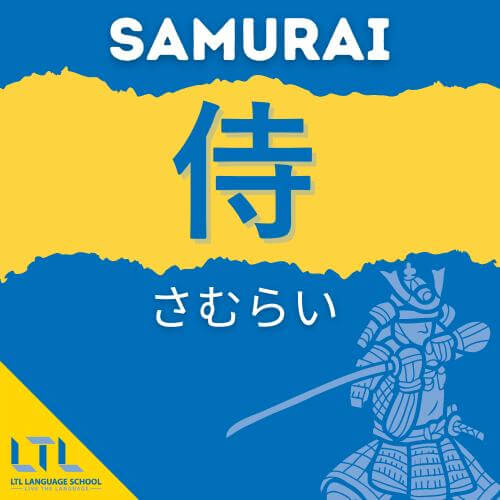Understanding the Meaning of Shogun and Seppuku
What is a Shōgun? The Role and Significance of Japan’s Feudal Lords PLUS Seppuku Explained
If you’re interested in the Japanese language or culture, you’ve almost definitely come across the word Shogun, or 将軍 しょうぐん .

Which is no surprise, given the huge success of the Shogun TV show!
As such, we’re here to answer some of your most commonly asked questions, including:
🤔 What exactly is a Shogun?
🤔 What’s the difference between Shogun and Samurai?
🤔 What is the origin and meaning of the word Shogun?
We’ll also delve into other elements from the Shogun TV show like “Seppuku”, as well as provide you with some key historical context so you can impress your friends when Season 2 hits your screen!
Let’s dive in.
Shogun Meaning || Roots of the Shogun
Shogun Meaning || Related Vocabulary: Seppuku
Shogun Meaning || Difference between Shogun, Bushi, Samurai, Daimyo
Shogun Meaning || FAQs
Shogun Meaning || Roots of the Shogun
Literally, 将軍 means military commander. The character 将 (しょう; shou) refers to the commander of an army is and this character also means to lead. 軍 (ぐん; gun) means army.
RELATED WORDS || Shogi 将棋 しょうぎ a game similar to chess, is also written using the character for “shogun 将軍.” The master of a sushi restaurant is called 大将 たいしょう taisho.

The word 将軍 しょうぐん shogun originally came from China.
In ancient times, as in China, the word shogun generally denoted a person or office who led an army, and there could be several generals at the same time.
The full title for a Shogun was 征夷大将軍 ( せいいたいしょうぐん Sei-i Taishōgun)
This translates to “Great General who Conquers the Barbarians.” The word “征夷 [せいい] seii” means “to conquer the barbarians” and “大[だい]” means great.
In ancient Japan, shogun meant “a commander appointed by the emperor to lead an army.”
📖 From the Kamakura period (1185-1333), the word “shogun” took on a unique meaning, and in the Edo period (1603-1867), the word “shogun” took on an even more special connotation. The use of the Japanese word “shogun” as it is used overseas is largely due to this special nature of the word.
The shogunate system was formally established in 1192 by Minamoto no Yoritomo (源頼朝), founder of the Kamakura shogunate, marking the beginning of a series of military governments that lasted until 1867.
Though the emperor retained symbolic authority, the shogun held actual control over Japan’s military and political affairs. The shogunate system was central during various periods in Japanese history, including the Kamakura, Ashikaga (Muromachi), and Tokugawa (Edo) eras, shaping much of Japan’s medieval and early modern history.
In Japan after the Meiji period (1868-1912), with the introduction of a Western-style military system, positions such as general, lieutenant general, and major general were created, and “shogun” came to mean a wide range of military personnel in these positions, and no longer had the same special meaning as in the Edo period.

Only in Japan || 12 Wonderful & Unique Places to Stay in Japan (+ A Bonus Entry)
If you’re looking for unique places to stay in Japan, you won’t be disappointed. Here are the 12 best places to stay in Japan with a bonus option also.
Shogun Meaning || Related Vocabulary: Seppuku
“Harakiri” is probably one of the most well-known Japanese words outside of Japan. Officially, it is called 切腹 せっぷく seppuku, meaning to commit suicide by slashing the abdomen.
During the samurai period, having one’s honor tarnished was considered a greater shame than death, so rather than live in disgrace, one would commit seppuku to maintain their honor.

The act involves disembowelment, where the individual uses a short blade to cut into their abdomen, followed by a secondary person, called a kaishakunin (介錯人 かいしゃくにん ), who would decapitate the individual to end the suffering quickly.
Although the word “kaishaku” means “to assist,” it is used exclusively in connection with seppuku.
Since it was considered difficult to die simply by cutting the abdomen, or it was dishonorable to be disfigured by the agony of pain, a person was assigned to cut off the head immediately after the disembowelment.
👉 Seppuku was primarily carried out to restore honor after a disgrace, to avoid capture, or as a form of protest against leadership. It was viewed as a demonstration of loyalty, courage, and self-discipline in line with the samurai code, bushido (武士道 ぶしどう )
It is said that the last person in Japan to commit seppuku was the writer Yukio Mishima (三島由紀夫).
Known for works such as “The Temple of the Golden Pavilion (金閣寺)” and “The Rokumeikan (鹿鳴館)” he broke into a Self-Defense Forces post in Ichigaya in 1970 and attempted to stage a coup d’etat, but failed and committed seppuku on the post grounds.
Since ancient times, Eastern cultures have had the custom of taking the head of an enemy commander as a sign of war merit. This was done by offering the head to one’s lord as proof of one’s achievements, or by having one’s subordinates take off the head of one’s lord and bring it to the enemy as a souvenir of surrender.
Even in modern Japanese, being fired is colloquially referred to as クビになる (kubi ni naru). Kubi literally means neck and the expression can be thought of as “losing one’s neck”. This phrase, in addition to クビが飛ぶ クビがとぶ (kubi ga tobu) used to describe being fired, are based on these old customs.
👀 In Japanese, when someone says お前はクビだ (omae wa kubi da), it means “You’re fired.”
Although not a samurai, Sen no Rikyu (千利休), who perfected the tea ceremony, was ordered to commit seppuku as a result of deteriorating relations with Toyotomi Hideyoshi (豊臣秀吉), one of Japan’s most powerful warlords.
Seppuku was not a simple suicide, but a way of dying to preserve one’s honor, and there were established rituals such as preparing tatami mats and purifying the body before committing seppuku.
Shogun Meaning || Difference between Shogun, Bushi, Samurai, Daimyo
Let’s break these four terms as simply as possible:
Shogun (将軍): The military leader and de facto ruler of Japan during the feudal era, appointed by the emperor but wielding actual political and military power over the country. The shogun commanded the bushi and ruled over the daimyo.
Bushi (武士): A general term for warriors in Japan, encompassing all members of the military class, including samurai. Bushi refers to the warrior class as a whole, who were expected to live by the bushido code of honor.
Samurai (侍): A specific rank within the bushi class, samurai were professional warriors who served a daimyo or noble, bound by loyalty and the code of bushido. They were the elite military forces and also held land and administrative duties.
Daimyo (大名): Powerful feudal lords who ruled large territories and had their own armies of samurai. The daimyo were vassals of the shogun and governed regions in exchange for loyalty and military support to the shogunate.

What is a Daimyo 大名 だいみょう ?
A myo 名 みょう is a rice field that was the unit of taxation during the Ritsuryo period (7th-10th centuries). A person who had many of these rice fields was called a daimyo, while a person who only owned a few was called a shomyo 小名 しょうみょう and so on.
Compared to people who were shogun, there were also many more people who bushi 武士 ぶし or daimyo (大名) .
For example, Oda Nobunaga (織田信長) and Toyotomi Hideyoshi (豊臣秀吉) were famous and powerful daimyo but they could not become shogun.
What is a Bushi 武士 ぶし ?
Bushi referred to the warrior class, but not all those engaged in warfare were bushi.
Some were low-ranking soldiers, who were called ashigaru 足軽 あしがる , who were foot soldiers of lower status, often conscripted from the peasantry or lower classes during Japan’s feudal period.
Bushi were professional warriors, often of noble or landowning background, and were expected to follow the bushido code of conduct, emphasizing loyalty, honor, and martial skill. Unlike ashigaru, bushi typically served in more prestigious roles, often on horseback, and had duties beyond the battlefield, including governance and administration.
There are many theories about the origin of the bushi. A popular theory is that they were originally members of the emperor’s family.
It was also once believed that farmers took up arms to protect their rice fields to become bushi. However, the tools that are considered to be the prerogative of the bushi are the bow and the horse. The bow requires daily training, the horse requires training in riding skills. These burdens are impossible for farmers.
👉 It is now believed that aristocrats who had fallen off the career path in the center of the country became warriors to suppress an armed uprising of peasants, which led to the birth of bushi.
What is a Samurai 侍 さむらい ?
Samurai are a specific subset of the bushi class.
Historically, the samurai were the more prominent and elite warriors, known for their service to a daimyo or feudal lord.
Samurai not only fought in battles but also held land, governed territories, and performed administrative duties. They were bound by bushido (as were the bushi) but are specifically remembered for their roles as loyal retainers and elite fighters.
In short, bushi refers to the entire warrior class, while samurai are the more elite and recognized warriors within that class, known for their skill sets and prominent roles in Japanese society.
All samurai are bushi, but not all bushi are samurai.

The Art of Stealth and Bushido || Samurai and Ninjas: Who Were They REALLY?
From Shadows to Swords: Uncovering the History of Ninjas and Samurai in Japan For non-Japanese folk, the terms samurai and ninja are very familiar, and we all have our own impression about who they were and what they looked like….
How did the Shogun emerge?
The shogun emerged in Japanese society as military leaders who took control when the emperor’s power weakened
In the late 12th century, civil wars and conflict led to the rise of strong warrior families, like the Minamoto clan. After winning a major conflict, Minamoto no Yoritomo, head of the samurai, was appointed as shogun in 1192, marking the beginning of the shogunate system, where the shogun ruled Japan with military power while the emperor remained a symbolic figure.
The shogun became the de facto ruler, governing the country and controlling the samurai class for centuries.
The Shogun thus created was not only a warrior, but was required to play games with the Imperial Court and to have enough charisma to win over all the warriors in the country. In other words, the Shogun was not merely a military leader, but a position with a very important role and authority in the governance of Japan.
That’s all for today! Will you be watching Season 2 of Shogun? Let us know in the comments section!
INTERESTED IN ASIAN CULTURES AND HISTORY? Make sure to check out:
👉 A Brief History of Chinese Dynasties
👉 Where Does the Silk Road Start?
👉 Life in Korea as a Foreigner
👉 8 World Heritage Sites in Vietnam
Shogun Meaning || FAQs
What does the word “shogun” mean?
The word shogun (将軍) refers to a military commander who held de facto political and military power in feudal Japan, often overshadowing the emperor.
Who was the first shogun?
Minamoto no Yoritomo is regarded as the first shogun, because he had acquired the right of appointment over other warriors from the imperial court, founding the first shogunate.
What does Seppuku mean?
Seppuku (切腹) is a form of ritual suicide by disembowelment followed by beheading by a second person, historically practiced by samurai in Japan to restore honor after disgrace or failure.
What is the difference between bushi and shogun?
Bushi (武士) refers to a samurai or warrior in feudal Japan, while a shogun (将軍) is the military leader who held supreme political power, often commanding the bushi.
What is a daimyo?
A myo(名[みょう]) is a rice field that was the unit of taxation, and a person who had many of these rice fields was called a daimyo.
What is a samurai?
A samurai (侍) was a member of the warrior class in feudal Japan, known for their code of honor, martial skills, and loyalty to their lords. The word is derived from “saburau さぶらう” which means to be a close attendant.
Want More From LTL?
WANT TO LEARN JAPANESE? Check out our online Japanese courses here.
We offer a 7-day free trial to all new students where you can study 24/7.
What about studying Japanese in Japan instead? We’ve got your back. Our Japanese courses in Tokyo can either be taken in small groups of no more than 5 students or individually for a more tailored experience.
We even offer incredible homestay experiences in Tokyo as well.
Come and be a part of this amazing community.









